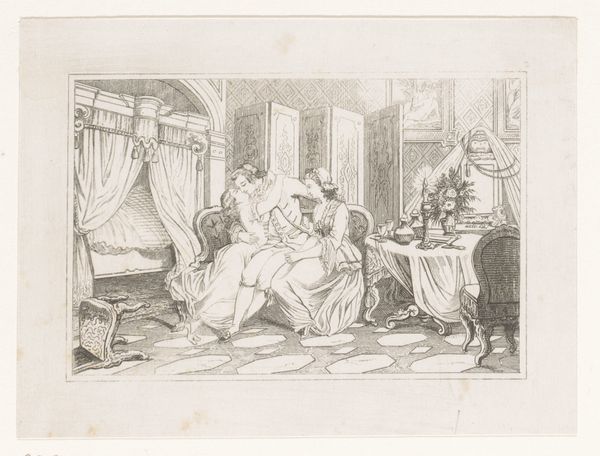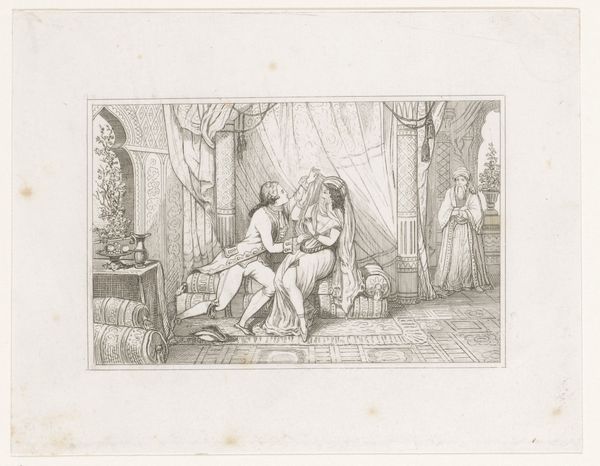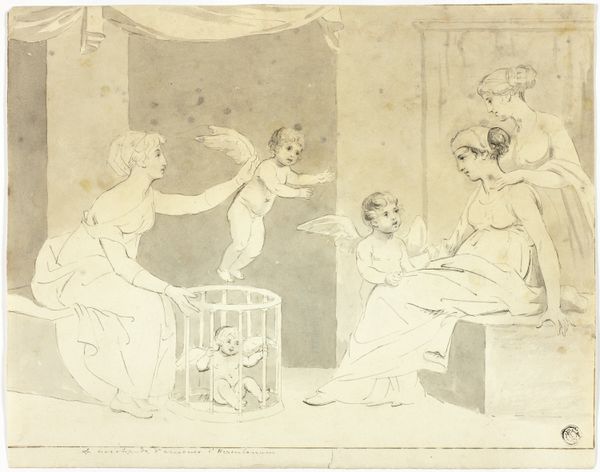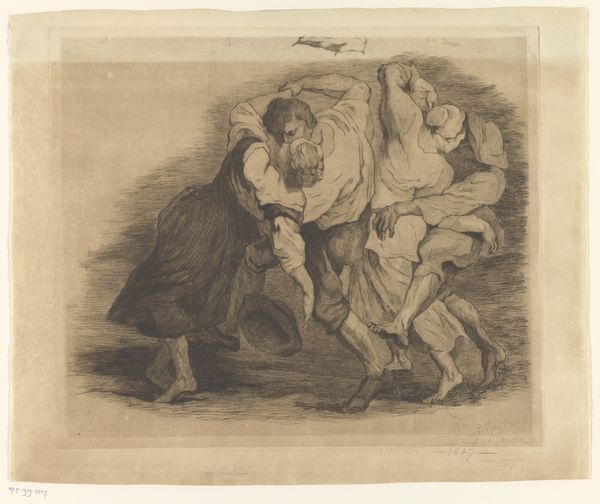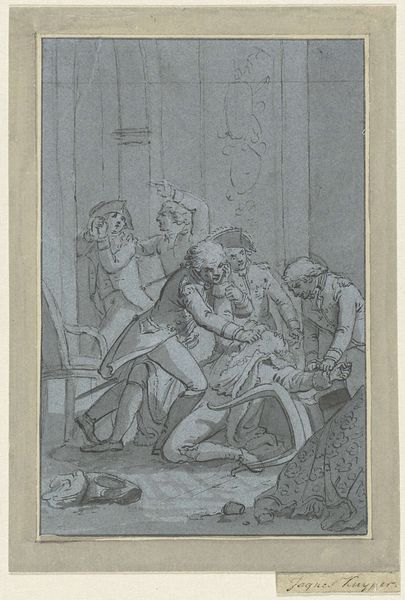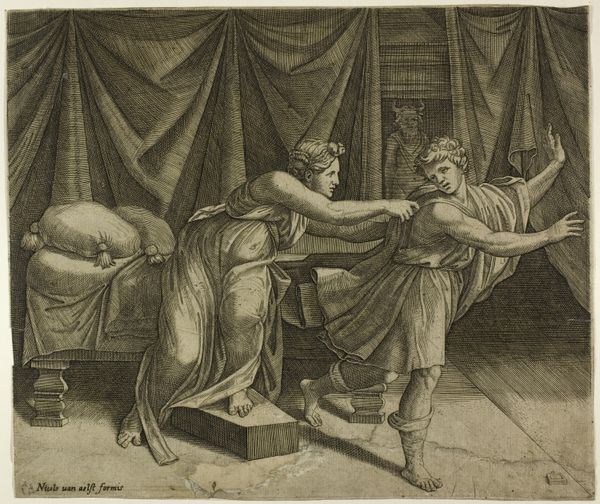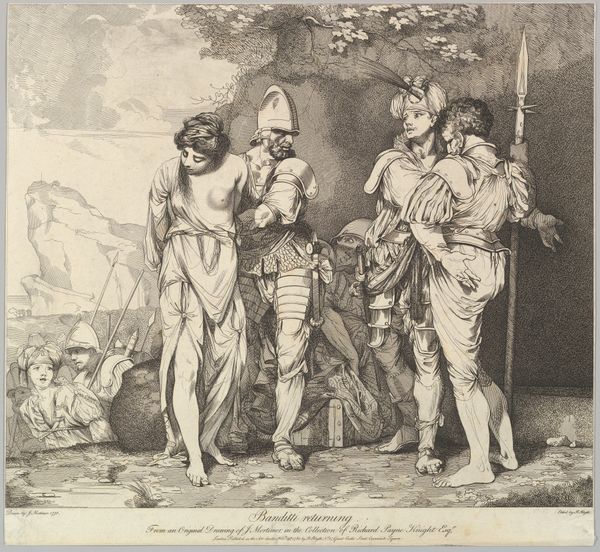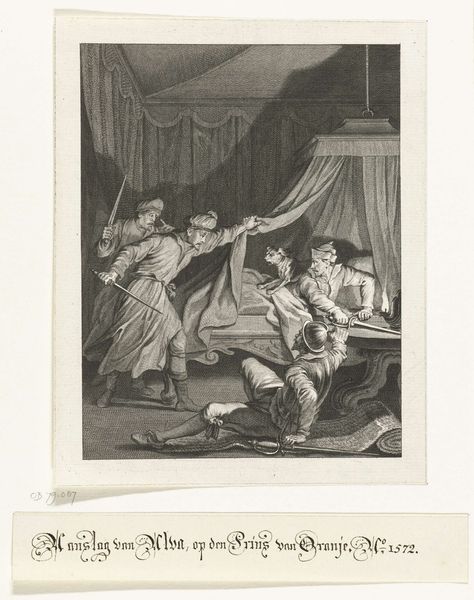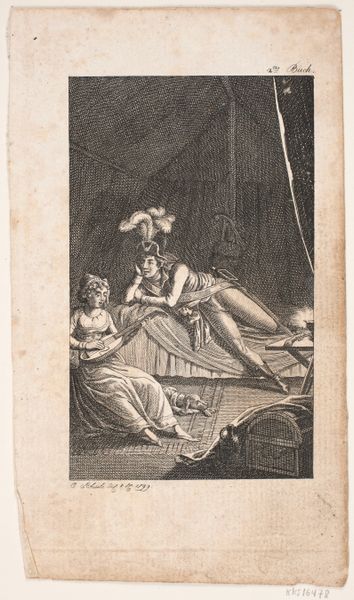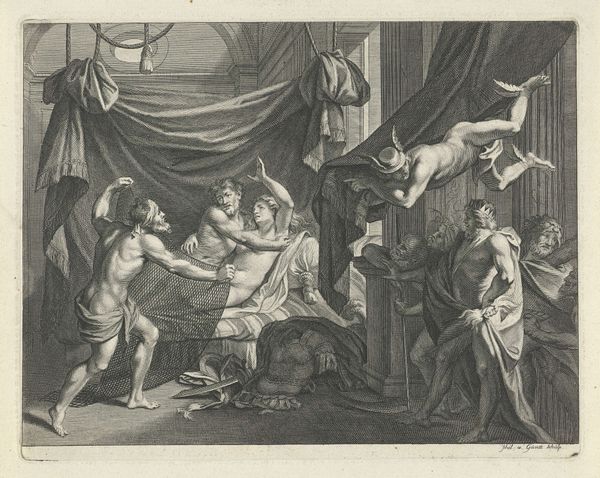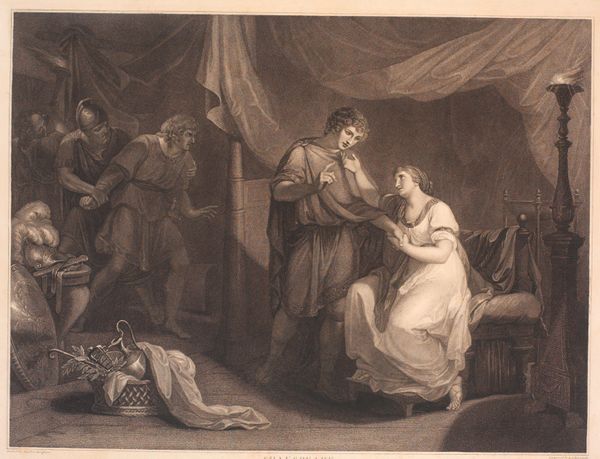
drawing, print, paper, ink, pen
#
drawing
#
narrative-art
# print
#
charcoal drawing
#
figuration
#
paper
#
ink
#
coloured pencil
#
romanticism
#
pen
#
genre-painting
#
history-painting
Dimensions: 425 × 579 mm
Copyright: Public Domain
Curator: Bartolomeo Pinelli's "Paolo and Francesca," a print drawing created around 1811, currently resides at the Art Institute of Chicago. The scene captures a moment of intense drama, a visual culmination of forbidden desire. Editor: My first impression is of contained chaos. There's a hushed intimacy in the center countered by the looming violence of the male figure on the left. The subdued palette and fluid lines contribute to the work's sense of haunting inevitability. Curator: Pinelli renders a narrative steeped in the potent themes of transgression, gendered power dynamics, and inevitable consequence. The piece calls attention to the way female agency is policed. This artistic portrayal intersects neatly with feminist critiques on social controls, echoing Simone de Beauvoir’s observations about female existential confinement. Editor: I find myself drawn to the symbolism of the book the woman holds. It's no mere prop. Given the context—the tragic affair between Paolo and Francesca as written by Dante Alighieri—the book operates as an omen of doom, an objectification that carries with it the full weight of a foretold tragedy, a silent participant that seals their ill-fated relationship. Curator: Precisely. Its literary significance highlights the active roles books play in shaping destinies, or fueling them in this case. There is a palpable intersection here, showing us how a supposedly liberating element, literacy and art, can trigger destructive events in cultures unwilling to embrace new social mores or accommodate evolving female subjectivities. Editor: Note, too, how Pinelli uses line work and shadow to heighten emotional tensions. The dramatic sweep of the curtain echoes the arc of the drawn sword; this evokes potent notions of surprise, revelation, and even inescapable destiny, as well as adding another layer to interpreting how betrayal plays out culturally as something unexpected. Curator: I'm compelled by how Pinelli's image continues to ignite discourse about desire, culpability, and the cost society imposes on those who dare defy accepted norms. The dialogue, sadly, is perennial. Editor: And, perhaps the real power resides not just in its explicit narrative, but also in its implicit examination of hidden emotional truths buried deep beneath accepted notions of fidelity. Thank you.
Comments
No comments
Be the first to comment and join the conversation on the ultimate creative platform.

